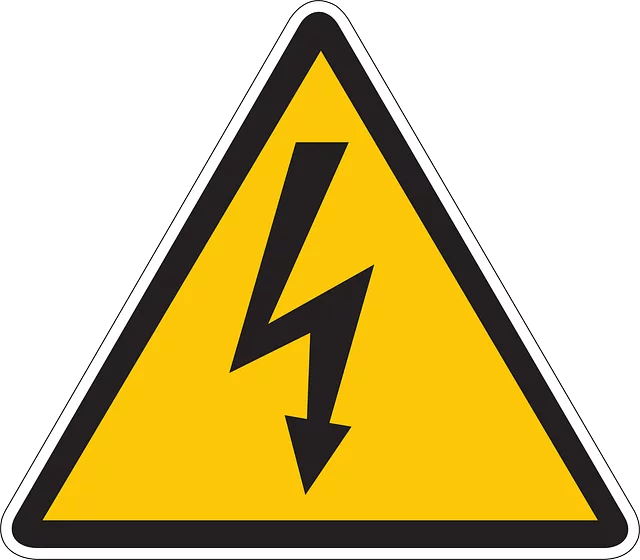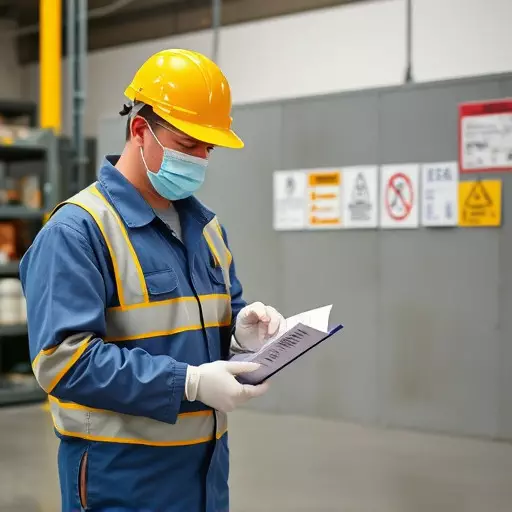OSHA workplace safety inspections in high-risk industries like construction and manufacturing require a deep understanding of industry-specific guidelines. These include managing hazardous substances, preventing falls, and ensuring machinery safety. Businesses must invest in tailored risk assessment protocols, comprehensive worker training, and efficient SDS management to comply with evolving regulations, prevent violations, and foster safer work environments. Implementing digital tools can streamline data collection and improve OSHA compliance while cultivating a culture of continuous workplace safety improvement.
“Navigating industry-specific OSHA compliance can be a complex task, given the varying nature of workplace hazards and regulations. This article delves into the unique challenges faced by distinct sectors, exploring how organizations can enhance their OSHA adherence. From understanding industry-tailored expectations to implementing robust hazard assessment protocols and ensuring meticulous Safety Data Sheet (SDS) documentation, we offer practical insights.
Through case studies, we highlight real-world strategies for overcoming compliance hurdles, providing a comprehensive guide for professionals aiming to excel in OSHA workplace safety inspections.”
- Understanding OSHA's Role and Expectations in Specific Industries
- – Unique industry regulations and standards
- – Impact on workplace safety inspections
- Comprehensive Hazard Assessment Protocols: Challenges and Solutions
Understanding OSHA's Role and Expectations in Specific Industries
OSHA, or the Occupational Safety and Health Administration, plays a pivotal role in ensuring workplace safety across various industries. Its mission is to prevent injuries, illnesses, and deaths related to work by setting and enforcing standards. However, navigating OSHA compliance can be challenging, especially within specific sectors that face unique risks and hazards. Each industry has its own set of regulations and expectations, necessitating a tailored approach to compliance.
For instance, in high-risk industries like construction or manufacturing, OSHA workplace safety inspections are more frequent and stringent. These industries often deal with heavy machinery, hazardous materials, and complex tasks that demand meticulous attention to detail during hazard assessment protocols. Safety data sheet (SDS) compliance is also crucial; employers must ensure that employees have access to accurate and up-to-date information about the chemicals used in their work environment. Understanding OSHA’s expectations involves a deep dive into industry-specific guidelines, regular training for workers, and continuous improvement of safety practices.
– Unique industry regulations and standards
Every industry has its own set of unique regulations and standards that must be strictly adhered to for OSHA workplace safety inspections. These regulations are designed to mitigate specific risks inherent to each sector, from chemical manufacturing to construction and healthcare. For instance, the chemical industry faces stringent guidelines for handling hazardous substances, including detailed hazard assessment protocols and mandatory Safety Data Sheet (SDS) compliance. In contrast, construction sites have their own set of OSHA requirements focusing on fall prevention, heavy machinery safety, and protective gear use.
Understanding and staying current with these industry-specific standards is crucial for preventing violations and ensuring a safe work environment. During inspections, OSHA officials assess adherence to these protocols, which can lead to significant penalties if found wanting. Therefore, businesses must invest in comprehensive training programs and regularly update their safety policies to meet the evolving needs of their respective industries, thereby fostering a culture of continuous improvement in workplace safety.
– Impact on workplace safety inspections
Industry-specific OSHA compliance challenges significantly influence the approach and frequency of workplace safety inspections. Each sector has unique hazards that require tailored risk assessment protocols, making one-size-fits-all strategies less effective. For instance, construction sites face different risks than healthcare facilities or manufacturing plants, necessitating distinct inspection checklists and focus areas.
OSHA workplace safety inspections play a crucial role in identifying potential hazards, ensuring compliance with safety data sheet (SDS) management, and ultimately protecting workers. However, when industry-specific challenges are not adequately addressed, inspectors may miss critical issues. Implementing comprehensive hazard assessment protocols that account for sector-specific risks is essential to enhancing the accuracy and efficiency of OSHA workplace safety inspections.
Comprehensive Hazard Assessment Protocols: Challenges and Solutions
Comprehensive Hazard Assessment Protocols play a pivotal role in ensuring OSHA (Occupational Safety and Health Administration) workplace safety inspections are effective. However, implementing robust assessment protocols presents several challenges, particularly for industries with unique operational complexities. Construction sites, for instance, must navigate hazardous materials, confined spaces, and heavy machinery, requiring meticulous planning to identify potential risks accurately.
To overcome these challenges, organizations should invest in specialized training for their safety teams. Regular updates on industry-specific hazards and regulatory changes are essential. Leveraging technology can also enhance assessment efficiency; digital platforms and mobile apps can streamline data collection and create accessible Safety Data Sheets (SDS) for quick reference during inspections. This proactive approach not only facilitates OSHA compliance but also fosters a culture of continuous improvement in workplace safety practices.


